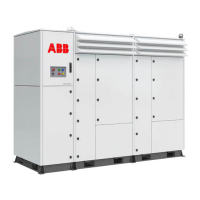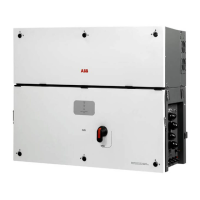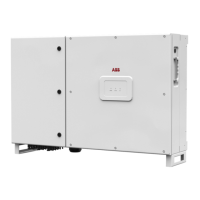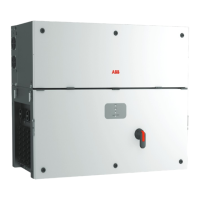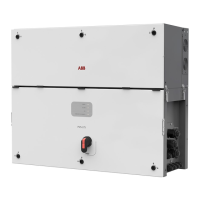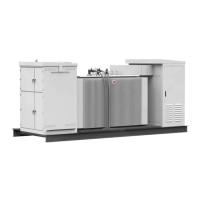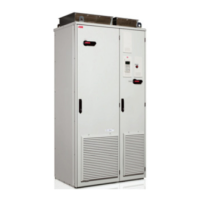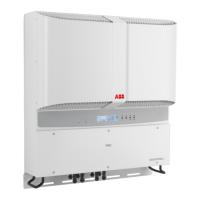Program features 23
The voltage comparisons are defined using parameters 126.04 Hv Rt symm sig and
126.05 Hv Rt asymm sig. The asymmetric limit can be set with parameter
126.06 Asymm/symm limit.
Settings
See parameter group:126 FRT tripping curve
Grid support
Grid support allows injecting capacitive or inductive current to the grid. This function
supports grid voltage during voltage peak or dip. Typically, the amount of reactive current
depends on the grid voltage level. Different grid codes demand different grid support
functionalities and are defined by parameter settings. The grid support reactive power
reference overrides the normal reactive power reference.
Note: The parameter settings are preset according to the grid code.
Triggering grid support
Grid support activates when the voltage drops below the low trigger level 125.04 Lv Gs trig
U % or rises above the high trigger level 125.18 Hv Gs trig U %. The actual voltage that is
compared against the trigger level can be selected separately for symmetric and
asymmetric faults with parameters 125.02 Gs Lv symm sig and 125.03 Gs Lv asymm sig,
respectively. The asymmetric limit is set with parameter 126.06 Asymm/symm limit as a
ratio of negative and positive sequence grid voltages.
Trigger voltages are relative to a reference voltage and are set to either nominal voltage or
to a pre-fault 60 second average voltage. The reference voltage is selected using
parameter 125.51 Gs reference voltage. If the selection is Nominal voltage, then the
selected actual voltage is compared against the nominal value. However, a typical no-fault
voltage can vary from one connection point to another. This can be taken into account by
setting the reference voltage to a 60 s average. The average voltage is selected with
parameter 125.52 Gs average voltage and this value is then used as a reference voltage.
In practice this means that if the pre-fault voltage is 110% and the trigger is set to 90%,
grid support is triggered at 110 - (100 - 90) = 100% of nominal voltage, where the
difference is between nominal voltage and trigger voltage. See timing diagrams of grid
support modes in Figure 6.Grid support current curve - K factor mode and Figure 7.Grid
support current - curve points mode.
During a grid fault, the injected reactive current comprises of a base part, I
base
, and an
additional grid support part, I
delta
. The base part can either be zero or equal to a pre-dip
value that is calculated as a 60 second average of the actual reactive current. The base
part can be configured with parameter 125.50 Gs base current. Grid support current I
delta
depends on the difference between the above-mentioned reference voltage and the
selected actual voltage.
